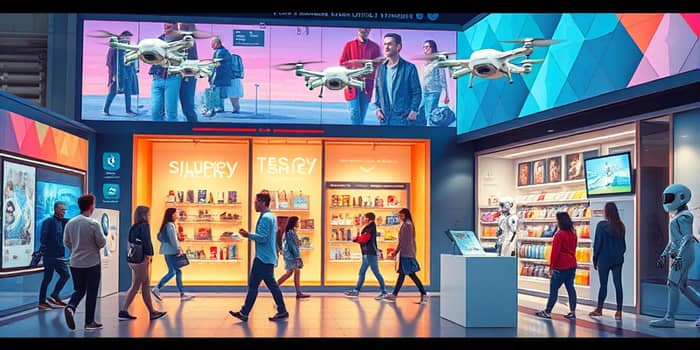
In 2025, the retail industry is navigating unprecedented shifts driven by technological innovation, evolving consumer values, and economic pressures.
From global market surges to localized challenges, this deep dive examines how retailers can adapt and thrive in a complex environment.
The latest figures show the global retail industry is projected to reach an impressive $35.2 trillion in 2025, backed by a robust 7.65% CAGR through the middle of the decade.
As consumers worldwide drive sales across physical stores and digital channels, total retail receipts are estimated at $32.4 trillion by year-end 2025, building toward a staggering $50.8 trillion valuation by 2030.
In the United States, retail sales are forecasted between $5.42 trillion and $5.48 trillion, reflecting a moderate growth range of 2.7% to 3.7% over 2024 levels.
Alternate data suggests U.S. sales could approach $7.4 trillion, though with a slower 0.4% year-over-year uptick and a modest 0.9% CAGR through 2030. Regardless, the sector’s footprint remains dominant, hosting 55 million jobs and contributing $5.3 trillion to GDP.
Retail leaders are embracing transformative technologies and meeting shifting consumer behaviors to stay competitive.
Gen Z and Millennials continue to redefine shopping norms, balancing digital convenience with in-store engagement, while value-seeking behaviors intensify in response to economic pressures.
Despite steady consumer spending, retailers must navigate ongoing macroeconomic headwinds.
Headline inflation has cooled, yet food-at-home prices linger around 25% above pre-pandemic levels. This prolonged inflation and stagnant real wages dynamic strains household budgets, boosting demand for discount formats and private-label goods.
Geopolitical tensions and potential tariff hikes—up to 60% on key imports—introduce supply chain uncertainty and pricing volatility, urging businesses to diversify sourcing and build strategic reserves.
Meanwhile, the U.S. retail property market remains tight. Although 7,000–8,000 stores closed in 2024, vacancy rates hover at 4–5%, and average neighborhood center rents have climbed to approximately $25.5 per square foot.
To flourish amid these challenges, retailers are focusing on agility, customer insight, and operational efficiency.
Investment in analytics and AI not only sharpens demand forecasting but also powers dynamic pricing and personalized engagement strategies, essential for capturing consumer attention and loyalty.
Looking ahead, retailers that prioritize adaptability and customer-centric innovation will gain the upper hand.
Omnichannel approaches combining digital and physical environments are no longer optional—they are central to retaining loyalty and driving sales.
Emphasizing sustainability, from eco-friendly packaging to waste reduction, aligns with consumer values and can yield operational efficiencies.
Proactive monitoring of policy shifts, such as tariffs and labor regulations, helps mitigate risk and maintain supply chain resilience.
Finally, investing in advanced analytics and machine learning not only enhances personalization but also uncovers hidden market opportunities, ensuring growth even as consumer preferences continue to evolve.
References













